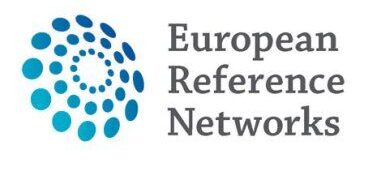Patient advocates – ePAGs
What are the ePAGs?
European Patient Advocacy Groups (ePAGs) bring together rare disease patient advocates who are actively involved in the work of the European Reference Networks.
 Each ePAG corresponds to the scope of one of the 24 ERNs, aligning patient organisations and clinicians, experts and researchers working on the same rare or complex disease or highly specialised intervention.
Each ePAG corresponds to the scope of one of the 24 ERNs, aligning patient organisations and clinicians, experts and researchers working on the same rare or complex disease or highly specialised intervention.
ePAG advocates represent the interests of the wider patient community to ensure that the needs of people living with a rare disease are included in the strategic and operational delivery of the networks.
In order to ensure a higher level of involvement of patients in the decision and opinion-making processes, EURORDIS has established ePAGs for each established ERN. ePAGs bring together elected patient representatives and affiliated organisations who will ensure the patient voice is heard throughout the ERNs’ activities. ePAGs are formed of member organisations and elected representatives.
ePAG Tasks
Patient representatives participate in all BOND governance bodies, bringing their perspective on the organisation and management of the network, specifically to:

- ensure and promote that clinical care is patient-centred and respects patients’ rights and choices
- ensure transparency
- monitor ethical issues
- ensure evaluation of patient experience
- contribute to the development of patient information, policy, good practice, care pathways and guidelines
- participation in ERN evaluation
ERN BOND patient representatives
9 patient advocates are involved within the BOND’s activities, from 9 different patient associations.
ePAGs members co-lead the working group “Visibility Towards Patients & HCP” which works for an effective communication and engagement of the end users and all the relevant stakeholders.
Concrete participation of ePAGs overall facilitates the Network to develop cost-effective supportive environment that enables citizens to become more proactive in co-defining and implementing healthcare plans.
Network ePAGs inclusion procedure
Due to the complexity and low prevalence of rare diseases, as well as to the limited body of knowledge, experience and expertise in the field of rare diseases, the role of rare disease patients (as experts in their diseases) in the development of ERNs is fundamental. Therefore, the document has been created in order to attract new ERN BOND ePAG advocates for a higher level of involvement of patients in the decision and opinion-making processes is essential to ensure the successful development of ERNs.



 Rebecca Tvedt Skarberg, lives in Oslo, Norway. Being born with osteogenesis imperfecta her interest in disability rights, equity and patient advocacy started from an early age. Her main goal has always been to spread awareness, knowledge and independency for people with rare conditions.
Rebecca Tvedt Skarberg, lives in Oslo, Norway. Being born with osteogenesis imperfecta her interest in disability rights, equity and patient advocacy started from an early age. Her main goal has always been to spread awareness, knowledge and independency for people with rare conditions. Inês Alves (DVM) has a degree in veterinary medicine, Oporto University, a post-graduation in soft tissues surgery, and is a Ph.D. student, Évora University, Portugal. Her advocacy involvement in rare bone conditions started after becoming the mother of a child with achondroplasia in 2012. She is member of the Committee for Orphan Medicinal Products (COMP) at the European Medicine Agency; ePAG and steering committee member in ERN BOND; founder and president of
Inês Alves (DVM) has a degree in veterinary medicine, Oporto University, a post-graduation in soft tissues surgery, and is a Ph.D. student, Évora University, Portugal. Her advocacy involvement in rare bone conditions started after becoming the mother of a child with achondroplasia in 2012. She is member of the Committee for Orphan Medicinal Products (COMP) at the European Medicine Agency; ePAG and steering committee member in ERN BOND; founder and president of  Tenna Toft Sylvest was born in 1981 and lives in Copenhagen, Denmark with her husband and twin daughters. Tenna was diagnosed with X-linked Hypophosphatemia (XLH) at around 18 months as the first in her family. One of her twin daughters has inherited XLH. Tenna has a master’s degree in political science and works as a Senior IT Consultant in Denmark. In 2018 Tenna co-founded the Danish patient organisation for XLH where she has served as president since 2018. The Danish
Tenna Toft Sylvest was born in 1981 and lives in Copenhagen, Denmark with her husband and twin daughters. Tenna was diagnosed with X-linked Hypophosphatemia (XLH) at around 18 months as the first in her family. One of her twin daughters has inherited XLH. Tenna has a master’s degree in political science and works as a Senior IT Consultant in Denmark. In 2018 Tenna co-founded the Danish patient organisation for XLH where she has served as president since 2018. The Danish  Liana is an Italian language teacher and is the parent of a patient with Multiple Osteochondromas. She beame involved with
Liana is an Italian language teacher and is the parent of a patient with Multiple Osteochondromas. She beame involved with  Born in 1967 in Milan, Italy. Patient with achondroplasia, Marco Sessa is President since 2009 of Italian Association on Achondroplasia
Born in 1967 in Milan, Italy. Patient with achondroplasia, Marco Sessa is President since 2009 of Italian Association on Achondroplasia  Nadine obtained her Master’s Degree in “Molecular Medicine” and continued her academic career as a Ph.D. candidate in Biochemistry with a focus on the rare disease Fibrodysplasia Ossificans Progressiva (FOP) and bone morphogenetic protein (BMP) signaling in an age-related context. She has a broad education in Molecular Biology, with a specific interest in understanding biomedical aspects of diseases. Moreover, Nadine is not only an FOP researcher but also lives with FOP and is in addition the vice-chair of the German
Nadine obtained her Master’s Degree in “Molecular Medicine” and continued her academic career as a Ph.D. candidate in Biochemistry with a focus on the rare disease Fibrodysplasia Ossificans Progressiva (FOP) and bone morphogenetic protein (BMP) signaling in an age-related context. She has a broad education in Molecular Biology, with a specific interest in understanding biomedical aspects of diseases. Moreover, Nadine is not only an FOP researcher but also lives with FOP and is in addition the vice-chair of the German  Claudio Pirola, born in 1959, lives near Milan in Italy, and is the father of three boys. Graduate in Political Science, Interpreter, he shared his professional career focused on Reinsurance with growing interest in respect of disability rights and patient advocacy. In 1998, Claudio and his wife adopted a child with a limb deficiency. This experience led him to join
Claudio Pirola, born in 1959, lives near Milan in Italy, and is the father of three boys. Graduate in Political Science, Interpreter, he shared his professional career focused on Reinsurance with growing interest in respect of disability rights and patient advocacy. In 1998, Claudio and his wife adopted a child with a limb deficiency. This experience led him to join 













 Funded by the European Union
Funded by the European Union



